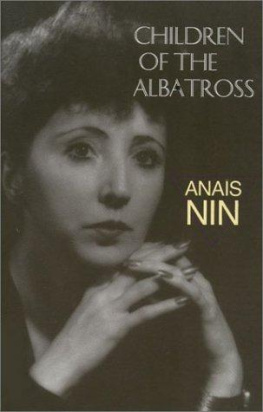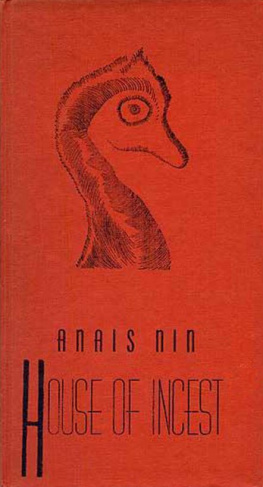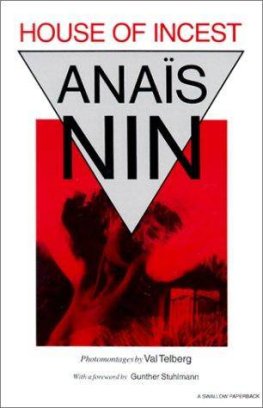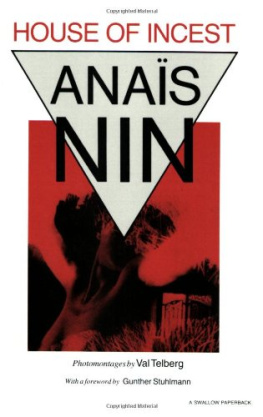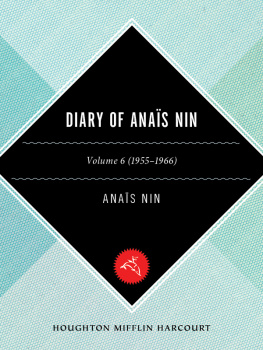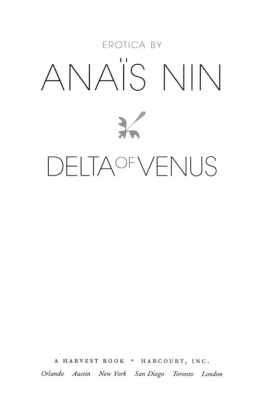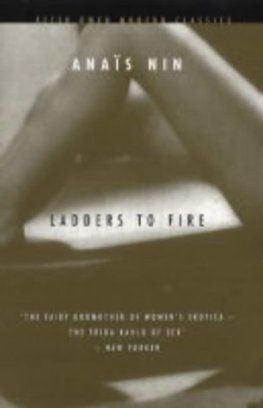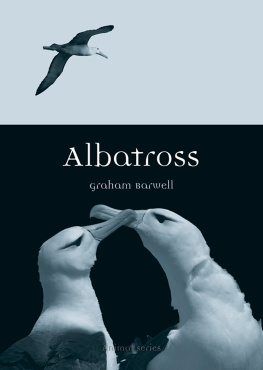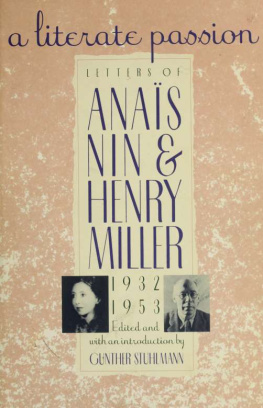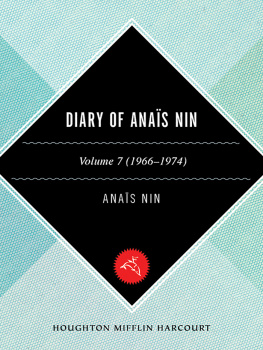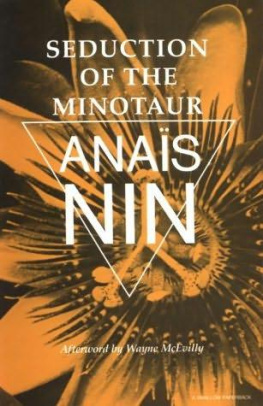Anais Nin - Children of the Albatross (Vol II of her continuous novel)
Here you can read online Anais Nin - Children of the Albatross (Vol II of her continuous novel) full text of the book (entire story) in english for free. Download pdf and epub, get meaning, cover and reviews about this ebook. year: 1959, publisher: Swallow Press, genre: Non-fiction. Description of the work, (preface) as well as reviews are available. Best literature library LitArk.com created for fans of good reading and offers a wide selection of genres:
Romance novel
Science fiction
Adventure
Detective
Science
History
Home and family
Prose
Art
Politics
Computer
Non-fiction
Religion
Business
Children
Humor
Choose a favorite category and find really read worthwhile books. Enjoy immersion in the world of imagination, feel the emotions of the characters or learn something new for yourself, make an fascinating discovery.
- Book:Children of the Albatross (Vol II of her continuous novel)
- Author:
- Publisher:Swallow Press
- Genre:
- Year:1959
- Rating:4 / 5
- Favourites:Add to favourites
- Your mark:
- 80
- 1
- 2
- 3
- 4
- 5
Children of the Albatross (Vol II of her continuous novel): summary, description and annotation
We offer to read an annotation, description, summary or preface (depends on what the author of the book "Children of the Albatross (Vol II of her continuous novel)" wrote himself). If you haven't found the necessary information about the book — write in the comments, we will try to find it.
Children of the Albatross (Vol II of her continuous novel) — read online for free the complete book (whole text) full work
Below is the text of the book, divided by pages. System saving the place of the last page read, allows you to conveniently read the book "Children of the Albatross (Vol II of her continuous novel)" online for free, without having to search again every time where you left off. Put a bookmark, and you can go to the page where you finished reading at any time.
Font size:
Interval:
Bookmark:

1959
Book II of CITIES OF THE INTERIOR
THESEALED ROOM
STEPPING OFF THE BUS at Montmartre Djunaarrived in the center of the ambulant Fair and precisely at the moment when sheset her right foot down on the cobblestones the music of the merry-go-round wasunleashed from its mechanical box and she felt the whole scene, her mood, herbody, transformed by its gaiety exactly as in her childhood her life in theorphan asylum had been suddenly transformed from a heavy nightmare to freedomby her winning of a dance scholarship.
As if, because of so many obstacles herchildhood and adolescence had been painful, heavy walking on crutches and hadsuddenly changed overnight into a dance in which she discovered the air, spaceand the lightness of her own nature.
Her life was thus divided into two parts: thebare, the pedestrian one of her childhood, with poverty weighing her feet, andthen the day when her interior monologue set to music led her feet into thedance.
Pointing her toe towards the floor she wouldalways think: I danced my way out of the asylum, out of poverty, out of mypast.
She remembered her feet on the bare floor oftheir first apartment. She remembered her feet on the linoleum of the orphanasylum. She remembered her feet going up and down the stairs of the home whereshe had been adopted and had suffered her jealousy of the affection bestowedon the legitimate children. She remembered her feet running away from thathouse.
She remembered her square-toed lusterlessshoes, her mended stockings, and her hunger for new and shining shoes in shopwindows.
She remembered the calluses on her feet fromhouse work, from posing for painters, from working as a manneuin, from cold,from clumsy mendings and from ill-fitting shoes.
She remembered the day that her dreaming brokeinto singing, and became a monologue set to music, the day when the dreamsbecame a miniature opera shutting out the harsh or dissonant sounds of theworld.
She remembered the day when her feet becamerestless in their prison of lusterless leather and they began to vibrate inobedience to inner harmonizations, when she kicked off her shoes and as shemoved her worn dress cracked under her arms and her skirt slit at the knees.
The flow of images set to music had descendedfrom her head to her feet and she ceased to feel as one who had been split intotwo pieces by some great invisible saber cut.
In the external world she was the woman who hadsubmitted to mysterious outer fatalities beyond her power to alter; and in herinterior world she was a woman who had built many tunnels deeper down where noone could reach her, in which she deposited her treasures safe from destructionand in which she built a world exactly the opposite of the one she knew.
But at the moment of dancing a fusion tookplace, a welding, a wholeness. The cut in the middle of her body healed, andshe was all one woman moving.
Lifted and impelled by an inner rhythm, with amusic box playing inside her head, her foot lifted from drabness andimmobility, from the swamps and miasmas of poverty, carried her acrosscontinents and oceans, depositing her on the cobblestone of a Paris square onthe day of the Fair, among shimmering colored tents, the flags of pleasure atfull mast, the merry-go-rounds turning like dervish dancers.
She walked to a side street, knocked on a darkdoorway opened by a disheveled concierge and ran down the stairway to a vastunderground room.
As she came down the stairway she could alreadyhear the piano, feet stamping, and the ballet masters voice. When the pianostopped there was always his voice scolding, and the whispering of smallervoices.
Sometimes as she entered the class wasdissolving, and a flurry of little girls brushed by her in their moth balletcostumes, the little girls from the Opera, laughing and whispering, flutteringlike moths on their dusty ballet slippers, flurries of snow in the darkness ofthe vast room, with drops of dew from exertion.
Djuna went down with them along the corridorsto the dressing rooms which at first looked like a garden, with the puffedwhite giant daisies of ballet skirts, the nasturtiums and poppies of Spanishskirts, the roses of cotton, the sunflowers, the spider webs of hair nets.
The small dressing room overflowed with thesmell of cold cream, face powder, and cheap cologne, with the wild confusion oflaughter, confessions from the girls, with old dancing slippers, faded flowersand withering tulle.
As soon as Djuna cast off her city clothes itwas the trepidating moment of metamorphosis.
The piano slightly out of tune, the floorsvibrations, the odor of perspiration swelled the mood of excitement born inthis garden of costumes to the accompaniment of whisperings and laughter.
When she extended her leg at the bar, theballet master placed his hand on it as if to guide the accuracy of her pointedtoe.
He was a slender, erect, stylized man of forty,not handsome in face; only in attitudes and gestures. His face was undefined,his features blurred. It was as if the dance were a sculptor who had taken holdof him and had carved style, form, elegance out of all his movements, but leftthe face unimportant.
She always felt his hand exceptionally warmwhenever he placed it on her to guide, to correct, improve or change a gesture.
When he placed his hand on her ankle she becameintensely aware of her ankle, as if he were the magician who caused the bloodto flow through it; when he placed his hand on her waist she became intenselyaware of her waist as if he were the sculptor who indented it.
When his hand gave the signal to dance then itwas not only as if he had carved the form of her body and released the courseof her blood but as if his hand had made the coordination between blood andgestures and form, and the lecon de danse became a lesson in living.
So she obeyed, she danced, she was flexible andyielding in his hands, plying her body, disciplining it, awakening it.
It became gradually apparent that she was thefavorite. She was the only one at whom he did not shout while she was dressing.He was more elated at her progress, and less harsh about her faults.
She obeyed his hands, but he found it moreimperative than with other pupils to guide her by touch or by tenderinflections of his voice.
He gave of his own movements as if he knew hermovements would be better if he made them with her.
The dance gained in perfection, a perfectionborn of an accord between their gestures; born of her submission and hisdomination.
When he was tired she danced less well. Whenhis attention was fixed on her she danced magnificently.
The little girls of the ballet troupe, maturein this experience, whispered and giggled: you are the favorite!
Yet not for a moment did he become for her aman. He was the ballet master. If he ruled her body with this magneticrulership, a physical prestige, it was as a master of her dancing for thepurpose of the dance.
But one day after the lessons, when the littlegirls from the Opera had left and there still hung in the air only an echo ofthe silk, flurry, snow and patter of activities, he followed her into thedressing room.
She had not yet taken off the voluminous skirtof the dance, the full-blown petticoat, the tight-fitting panties, so that whenhe entered the dressing room it seemed like a continuation of the dance. Acontinuation of the dance when he approached her and bent one knee in gallantsalutation, and put his arms around her skirt that swelled like a huge flower.She laid her hand on his head like a queen acknowledging his worship. Heremained on one knee while the skirt like a full-blown flower opened to allow akiss to be placed at the core.
Next pageFont size:
Interval:
Bookmark:
Similar books «Children of the Albatross (Vol II of her continuous novel)»
Look at similar books to Children of the Albatross (Vol II of her continuous novel). We have selected literature similar in name and meaning in the hope of providing readers with more options to find new, interesting, not yet read works.
Discussion, reviews of the book Children of the Albatross (Vol II of her continuous novel) and just readers' own opinions. Leave your comments, write what you think about the work, its meaning or the main characters. Specify what exactly you liked and what you didn't like, and why you think so.

